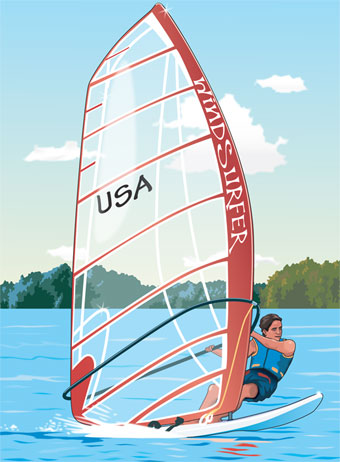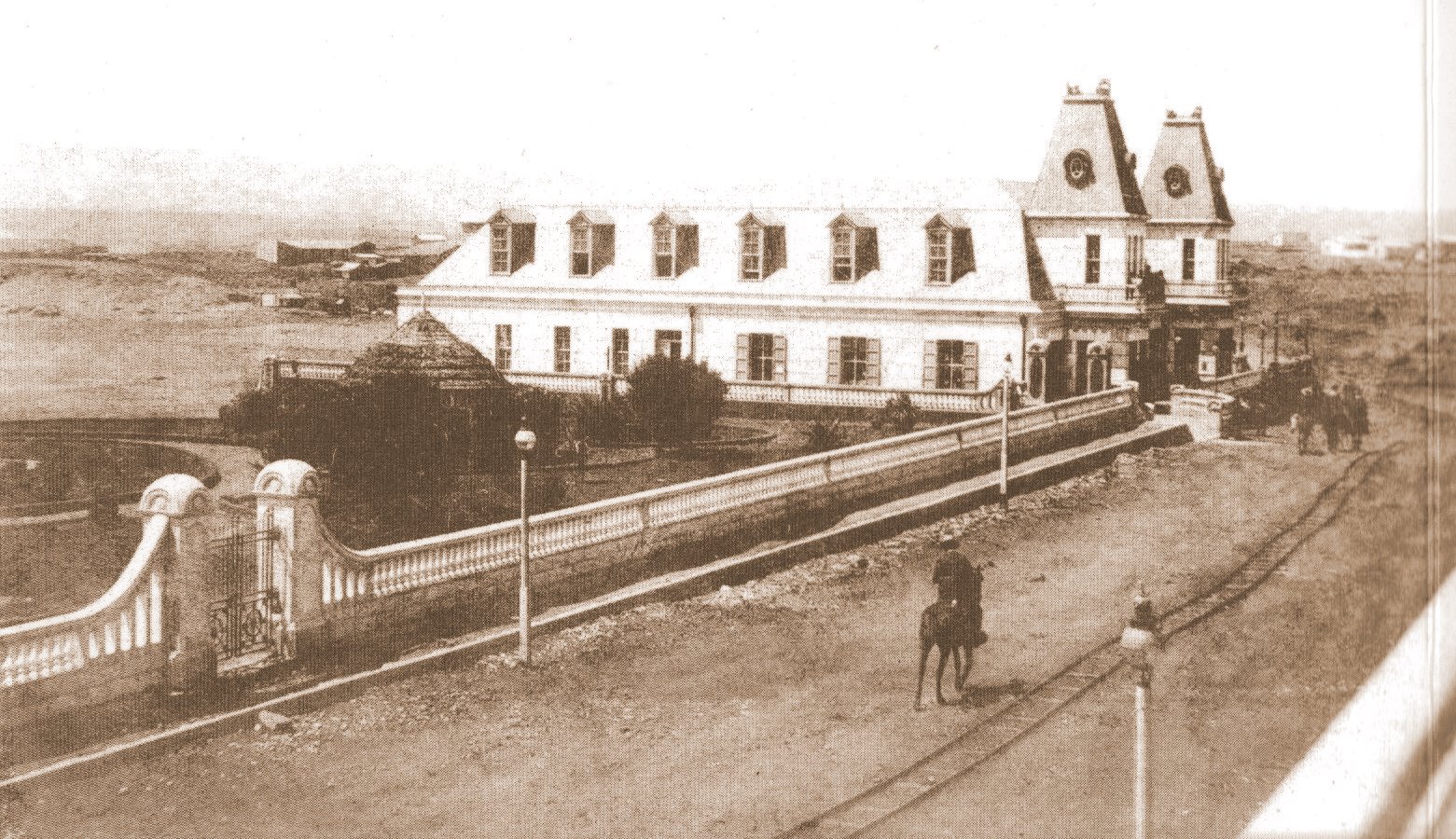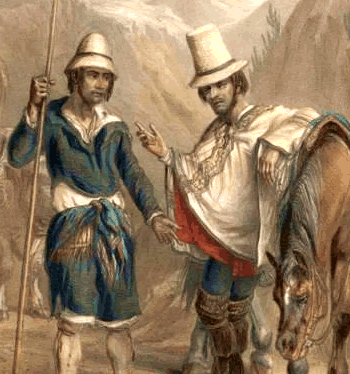|
City Of Pichilemu
Pichilemu (, ), originally known as Pichilemo, is a beach resort city and commune in central Chile, and capital of Cardenal Caro Province in the O'Higgins Region. The commune comprises an urban centre and twenty-two villages, including Ciruelos, Cáhuil, and Cardonal de Panilonco. It is located southwest of Santiago. Pichilemu had over 13,000 residents as of 2012. The Pichilemu area was long populated by the indigenous Promaucaes. European-Chilean development began in the mid-sixteenth century, as ''conquistador'' Pedro de Valdivia gave Juan Gómez de Almagro the Topocalma encomienda (which included the current territory of Pichilemu) in January 1541. Pichilemu was established as a subdelegation on 16 August 1867, and later as an "autonomous commune" on 22 December 1891, by decree of the President Jorge Montt and Interior Minister Manuel José Irarrázabal. Agustín Ross Edwards, a Chilean politician and member of the Ross Edwards family, planned to develop it as a beach reso ... [...More Info...] [...Related Items...] OR: [Wikipedia] [Google] [Baidu] |
City
A city is a human settlement of notable size.Goodall, B. (1987) ''The Penguin Dictionary of Human Geography''. London: Penguin.Kuper, A. and Kuper, J., eds (1996) ''The Social Science Encyclopedia''. 2nd edition. London: Routledge. It can be defined as a permanent and densely settled place with administratively defined boundaries whose members work primarily on non-agricultural tasks. Cities generally have extensive systems for housing, transportation, sanitation, utilities, land use, production of goods, and communication. Their density facilitates interaction between people, government organisations and businesses, sometimes benefiting different parties in the process, such as improving efficiency of goods and service distribution. Historically, city-dwellers have been a small proportion of humanity overall, but following two centuries of unprecedented and rapid urbanization, more than half of the world population now lives in cities, which has had profound consequences for g ... [...More Info...] [...Related Items...] OR: [Wikipedia] [Google] [Baidu] |
Conquistador
Conquistadors (, ) or conquistadores (, ; meaning 'conquerors') were the explorer-soldiers of the Spanish and Portuguese Empires of the 15th and 16th centuries. During the Age of Discovery, conquistadors sailed beyond Europe to the Americas, Oceania, Africa, and Asia, colonizing and opening trade routes. They brought much of the Americas under the dominion of Spain and Portugal. After arrival in the West Indies in 1492, the Spanish, usually led by hidalgos from the west and south of Spain, began building an American empire in the Caribbean using islands such as Hispaniola, Cuba, and Puerto Rico as bases. From 1519 to 1521, Hernán Cortés waged a campaign against the Aztec Empire, ruled by Moctezuma II. From the territories of the Aztec Empire, conquistadors expanded Spanish rule to northern Central America and parts of what is now the southern and western United States, and from Mexico sailing the Pacific Ocean to the Philippines. Other conquistadors took over the Inca ... [...More Info...] [...Related Items...] OR: [Wikipedia] [Google] [Baidu] |
Windsurf
Windsurfing is a wind propelled water sport that is a combination of sailing and surfing. It is also referred to as "sailboarding" and "boardsailing", and emerged in the late 1960s from the aerospace and surf culture of California. Windsurfing gained a popular following across Europe and North America by the late 1970s and had achieved significant global popularity by the 1980s. Windsurfing became an olympic sport in 1984. Newer variants include windfoiling, kiteboarding and Wing foiling, wingfoiling. Hydrofoil fins under the board allow the boards to safely lift out of the water and fly silently and smoothly above the surface even in lighter winds. Windsurfing is a recreational, family friendly sport, most popular at flat water locations around the world that offer safety and accessibility for beginner and intermediate participants. Technique and equipment have evolved over the years Major competitive disciplines include slalom, wave and freestyle. Increasingly, "foiling" is r ... [...More Info...] [...Related Items...] OR: [Wikipedia] [Google] [Baidu] |
Surfing
Surfing is a surface water sport in which an individual, a surfer (or two in tandem surfing), uses a board to ride on the forward section, or face, of a moving wave of water, which usually carries the surfer towards the shore. Waves suitable for surfing are primarily found on ocean shores, but can also be found in standing waves in the open ocean, in lakes, in rivers in the form of a tidal bore, or in wave pools. The term ''surfing'' refers to a person riding a wave using a board, regardless of the stance. There are several types of boards. The Moche of Peru would often surf on reed craft, while the native peoples of the Pacific surfed waves on alaia, paipo, and other such water craft. Ancient cultures often surfed on their belly and knees, while the modern-day definition of surfing most often refers to a surfer riding a wave standing on a surfboard; this is also referred to as stand-up surfing. Another prominent form of surfing is body boarding, where a surfer rides ... [...More Info...] [...Related Items...] OR: [Wikipedia] [Google] [Baidu] |
Electoral Divisions Of Chile
Chile has two distinct electoral division systems: * To elect members of the Chamber of Deputies and of the Senate, Chile is divided into several electoral divisions, namely electoral districts and senatorial constituencies. * To elect members of the Regional Councils, Chile is divided into several provincial constituencies, each of which correspond to one province, except for a few ones that are divided into several constituencies. Electoral districts There are 60 electoral districts (''distrito electoral''). Each district elects two deputies. Districts are made of groups of communes. Notes: "VAP" is voting age population (population 18 and above on 13 December 2009); "Valid votes" is equal to "Total votes" minus null votes and blank votes; "T" are total votes; "E" is enrolled population; "V" are valid votes. The voting results are for the 13 December 2009 Chamber of Deputies election. Senatorial constituencies There are 19 senatorial constituencies (''circunscripción s ... [...More Info...] [...Related Items...] OR: [Wikipedia] [Google] [Baidu] |
Consejo De Monumentos Nacionales
The National Monuments Council (Spanish: ''Consejo de Monumentos Nacionales'') is a Chilean government agency dedicated to the preservation and upkeep of special natural and cultural sites in Chile. The National Monuments Council was created in 1925 by law Nº 17.288. References External links * Government of Chile Government agencies established in 1925 Historic sites in Chile {{Chile-gov-stub ... [...More Info...] [...Related Items...] OR: [Wikipedia] [Google] [Baidu] |
Estación Pichilemu
Estación Pichilemu, also known as the Estación de Ferrocarriles de Pichilemu ( es, Railway station of Pichilemu) was a railway station in Pichilemu, Chile. It is a wood construction dated c. 1925, located in front of the Petrel Lake, near Daniel Ortúzar Avenue (). It remained in operation until the 1990s, and became a National Monument on September 16, 1994. It has since become an arts and culture center, and tourism information office. It exhibits decorative and practical objects from the 1920s, and features many old suits. History of railway line were constructed in the O'Higgins Region, but only still exists. The San Fernando– Pichilemu section was constructed over a period of 57 years between 1869 and 1926. Passenger services operated on the line until 1986 and freight services were operational until 1995. In 2006, the Peralillo Peralillo is a Chilean town and commune in Colchagua Province, O'Higgins Region. Demographics According to the 2002 census of the Nati ... [...More Info...] [...Related Items...] OR: [Wikipedia] [Google] [Baidu] |
Agustín Ross Park
Agustín Ross Park ( es, Parque Agustín Ross) is a park located in the Agustín Ross Avenue, in front of the old Ross Casino, in Pichilemu. It is a National Monument of Chile. The original park contains 100-year-old native Canary Island Date palms (''Phoenix canariensis ''Phoenix canariensis'', the Canary Island date palm or pineapple palm, is a species of flowering plant in the palm family Arecaceae, native to the Canary Islands off the coast of Morocco. It is a relative of ''Phoenix dactylifera'', the true dat ...'') and many green spaces. Both the park and the former casino were named National Monuments on February 25, 1988, and the majority of the houses situated in the park are private homes. It has become an attractive walking destination, following its restoration. The Park was severely damaged after the 2010 Pichilemu earthquake, with all of the balustrades surrounding the park being destroyed. References National Monuments of Chile in Pichilemu Building ... [...More Info...] [...Related Items...] OR: [Wikipedia] [Google] [Baidu] |
Agustín Ross Cultural Centre
Agustín Ross Cultural Centre (Spanish, '' Centro Cultural Agustín Ross''), previously known as Casino Ross (''Ross Casino''), is the cultural center of the city of Pichilemu in Libertador General Bernardo O'Higgins Region, Chile. It was constructed between 1906 and 1909 at the request of politician Agustín Ross Edwards. The structure of the cultural center is very similar to that of the Grand Trianon in Versailles, France. It is best known for housing one of the first casinos of Chile; a casino operated in the building between 1917 and 1931. After 1931 all casinos, except the newly opened Casino de Viña del Mar, were declared illegal. The building has also been used as a post office, a store selling imported goods, a hotel, a discotheque, and a bar. There were two attempts by the local government to purchase the building; the first time in 1982 failed while the second in 1995 succeeded. The former casino was declared a National Monument of Chile along with the Agustín Ross ... [...More Info...] [...Related Items...] OR: [Wikipedia] [Google] [Baidu] |
National Monuments Of Chile
The National Monuments of Chile (Spanish: ''Monumentos Nacionales de Chile''), also abbreviated MN, are the constructions, elements and places that form part of the country's cultural heritage, and they are protected by law. They are National Heritage Sites that are an important part of the culture of Chile. Definition and categories The law N° 17.288 of national monuments stipulates that: There are 938 national monuments as at October 2008. The monuments are grouped on the following categories: :* Historic Monuments (633). :* Public Monuments (150). :* Archaeologic Monuments (21 elementos). :* Typical or Picturesque Zones (95). :* Sanctuaries of Nature (39). Historic Monuments Are considered National Monuments: In the register of the National Monuments Council, there are 633 elements (October 2008). Some of the most notable are: :* Aduana de Antofagasta :* Ambassador (clipper) :* Ascensores de Valparaíso (Funicular railways of Valparaíso) :* Biblioteca Nacional ... [...More Info...] [...Related Items...] OR: [Wikipedia] [Google] [Baidu] |
Chilean People
Chileans ( es, Chilenos) are people identified with the country of Chile, whose connection may be residential, legal, historical, ethnic, or cultural. For most Chileans, several or all of these connections exist and are collectively the source of their Chilean identity. Chile is a multilingual and multicultural society, but an overwhelming majority of Chileans have Spanish as their first language and either are Christians or have a Christian cultural background. Therefore, many Chileans do not equate their nationality with ethnicity, but with citizenship and allegiance to Chile. The overwhelming majority of Chileans are the product of varying degrees of admixture between European ethnic groups (predominantly Spaniards and Basques) with peoples indigenous to Chile's modern territory (predominantly Mapuche). Although the historic mestizaje of Europeans and Amerindians is evident across all social strata in the Chilean population, there is a strong correlation between the ratio ... [...More Info...] [...Related Items...] OR: [Wikipedia] [Google] [Baidu] |
Edwards Family
The Edwards family of Chile is of Welsh origin. They became financially and politically influential during the 19th century. They have played and still play a significant role in Chilean politics, especially as owners of its most influential newspaper chain, El Mercurio S.A.P. Prominent members * George Edwards Brown (1780–1848), British doctor and businessman, founder of the family in Chile * Agustín Edwards Ossandón (1815–1878), Chilean businessman *Juana Ross Edwards (1830-1913), Chilean philanthropist * Agustín Edwards Ross (1852–1897), businessman and politician, purchased the Valparaíso, Chile edition of ''El Mercurio'' newspaper in 1880 * Alberto Edwards Vives (1874–1932), politician, historian and lawyer *Agustín Edwards Mac-Clure (1878–1941), businessman, diplomat and politician, President of the League of Nations and founder of the Santiago edition of ''El Mercurio'' newspaper *Raúl Edwards Mac-Clure (1880–1927), businessman and politician *Joaquín E ... [...More Info...] [...Related Items...] OR: [Wikipedia] [Google] [Baidu] |







